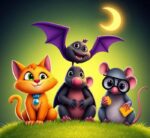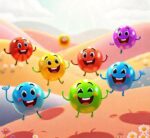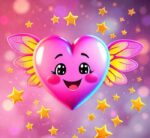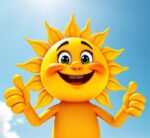- You are here:
- Home »
- words
- » Kindergarten Words That Start With A [LIST]
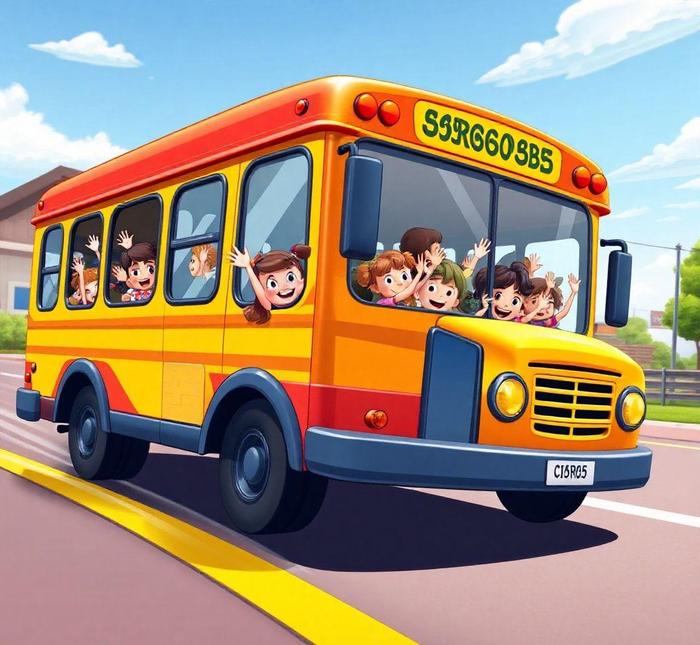
Kindergarten Words That Start With A [LIST]
When teaching young children to read and write, starting with simple, recognizable words can build a strong foundation for language development. Words that begin with the letter ‘A’ are an excellent starting point for kindergarteners, as they often represent familiar objects, animals, and actions that children encounter in their everyday lives. From ‘apple’ to ‘ant’, these words are not only easy to pronounce but also offer a fun way to engage children in learning while reinforcing their understanding of the alphabet.
In this article, we’ve compiled a comprehensive list of kindergarten words that start with ‘A’. These words are perfect for early literacy lessons, offering a variety of vocabulary that will help children build their reading skills, expand their vocabulary, and connect sounds with letters. Whether you’re a teacher, parent, or caregiver, this list will provide valuable resources for creating engaging and educational activities for your young learner.
Kindergarten Words That Start With A
1. apple
An apple is a round fruit that can be red, green, or yellow. It is sweet and healthy, often eaten as a snack or used in cooking.
Examples
- I eat an apple every day.
- The apple is red and shiny.
- My mom makes apple pie.
2. ant
An ant is a tiny insect known for living in large groups called colonies. They are hardworking and often seen carrying food back to their nests.
Examples
- The ant is very small.
- I saw an ant carrying food to its home.
- Ants live in colonies and work together.
3. air
Air is the invisible mixture of gases that surrounds the Earth. It is essential for breathing and helps to keep things cool or warm.
Examples
- The air is fresh in the morning.
- I like to breathe the cool air.
- The air around us is always moving.
4. alligator
An alligator is a large reptile that lives in warm, wet areas like swamps and rivers. It has a long, strong body and sharp teeth.
Examples
- The alligator has a long tail.
- Alligators live in swamps.
- I saw an alligator at the zoo.
5. animal
An animal is any living thing that moves, breathes, and eats. Examples of animals include pets, farm animals, and wild creatures.
Examples
- A dog is an animal.
- There are many animals on the farm.
- Elephants are huge animals.
6. angel
An angel is a heavenly being often seen in stories or art with wings. Angels are believed to be messengers or protectors in many cultures.
Examples
- The angel has big wings.
- Angels are often shown as kind and helpful.
- My grandmother says angels protect us.
7. apron
An apron is a piece of clothing worn over the front of your body to protect your clothes from dirt or stains, especially when cooking or working.
Examples
- I wear an apron when I cook.
- The chef’s apron is very clean.
- Mom put on her apron before baking cookies.
8. arm
An arm is the part of your body that connects your shoulder to your hand. It is used for lifting, carrying, and reaching.
Examples
- My arm hurts after playing.
- She waved her arm at the teacher.
- He used his arm to carry the box.
9. asleep
Asleep means to be in a state of rest, with your body and mind quiet. When someone is asleep, they are not awake or active.
Examples
- I was asleep during the movie.
- He is still asleep in his bed.
- The baby fell asleep quickly.
10. ape
An ape is a type of primate that is larger than a monkey. Apes are known for their intelligence and strength.
Examples
- An ape is similar to a monkey.
- I saw an ape at the zoo swinging from tree to tree.
- Apes are very strong animals.
11. airplane
An airplane is a vehicle that flies in the sky, carrying people or goods. It has wings and an engine to help it stay airborne.
Examples
- The airplane flies in the sky.
- We will take an airplane to go on vacation.
- The airplane is very fast.
12. art
Art is the creation of beautiful things, like drawings, paintings, and sculptures. It allows people to express their feelings and ideas.
Examples
- I love to make art with crayons.
- The art in the museum was beautiful.
- We have an art class every Friday.
13. actor
An actor is a person who performs in plays, movies, or television shows. They pretend to be characters in stories for entertainment.
Examples
- The actor played a superhero in the movie.
- My favorite actor is in a new film.
- He wants to become an actor when he grows up.
14. act
To act means to pretend to be something or someone else, often for a performance or show. It can also mean to behave or take action.
Examples
- We act in a play at school.
- It is important to act kind to others.
- I will act in the school talent show.
15. adventure
An adventure is an exciting or unusual experience, often involving exploration, discovery, or a journey to a new place.
Examples
- We had an adventure in the forest.
- Going to the beach is always an adventure.
- An adventure is a fun trip or experience.
16. alphabet
The alphabet is a set of letters used in writing. In English, there are 26 letters from A to Z.
Examples
- We are learning the alphabet in class.
- The alphabet has 26 letters.
- I can sing the alphabet song.
17. avocado
An avocado is a green fruit with a soft, creamy texture inside. It is often used in salads, sandwiches, and dips.
Examples
- Avocados are good for making guacamole.
- I put avocado on my sandwich.
- The avocado is green and soft inside.
18. acorn
An acorn is a small nut that grows on oak trees. It is the seed that can grow into a new oak tree if planted.
Examples
- An acorn is the seed of an oak tree.
- Squirrels eat acorns during the winter.
- I found an acorn on the ground.
19. awesome
Awesome is a word used to describe something amazing or impressive. When something is awesome, it makes you feel excited or happy.
Examples
- The fireworks were awesome!
- That was an awesome game.
- I had an awesome time at the party.
20. anchor
An anchor is a heavy object used to keep a boat or ship from moving. It is dropped into the water to hold the vessel in place.
Examples
- The anchor holds the boat in place.
- The sailor dropped the anchor into the water.
- The ship is safe now that the anchor is down.
21. alarm
An alarm is a sound or signal that warns you about something, like waking up, or a danger, such as fire or a break-in.
Examples
- The alarm rang when it was time to wake up.
- I set the alarm for 7 AM.
- The alarm went off because of the fire.
22. apple pie
Apple pie is a dessert made from apples, sugar, and spices, usually baked in a crust. It is a popular treat, especially in the fall.
Examples
- Grandma baked apple pie for dessert.
- I love the smell of apple pie in the oven.
- We eat apple pie with vanilla ice cream.
23. amazing
Amazing describes something that is very surprising or wonderful, something that leaves you in awe because it is so good or impressive.
Examples
- The circus show was amazing!
- The view from the mountain was amazing.
- It was amazing how quickly he finished his homework.
24. applause
Applause is the sound of people clapping their hands to show appreciation for something, like a performance or a speech.
Examples
- The audience gave applause after the play.
- Everyone clapped in applause when she finished singing.
- We gave applause for the great performance.
25. alphabetical
Alphabetical refers to the order of the letters in the alphabet. When things are in alphabetical order, they are arranged from A to Z.
Examples
- We arranged the books in alphabetical order.
- Her name starts with A, so it comes first in the alphabetical list.
- The dictionary has alphabetical order.
26. all
All means everything or everyone. When you say ‘all,’ you are talking about the whole group or entire amount.
Examples
- All the children are playing outside.
- I want to see all the animals at the zoo.
- She invited all her friends to the party.
27. addition
Addition is a math operation where you combine two or more numbers to find a total. It is one of the basic skills in math.
Examples
- In math, addition is putting numbers together.
- 3 plus 2 is 5, which is addition.
- We practiced addition with numbers up to 10.
28. astronaut
An astronaut is a person who travels in space to explore and conduct experiments. They wear a special suit to protect them in the harsh conditions of space.
Examples
- The astronaut wore a special suit in space.
- I want to be an astronaut when I grow up.
- The astronaut floated in space with no gravity.
29. artichoke
An artichoke is a green vegetable with spiky leaves. The edible part is the heart inside, which is tender and often used in cooking.
Examples
- The artichoke is a vegetable.
- I had artichoke for lunch.
- The artichoke tastes a little bitter.
30. arrow
An arrow is a pointed object, often shot with a bow. It is used for targeting something or can be a symbol to show direction.
Examples
- The archer shot an arrow at the target.
- The arrow pointed to the right.
- I saw an arrow on the sign, which showed the way.
31. ask
To ask means to request information or help. It is a way of seeking answers or making a request from someone.
Examples
- I will ask my teacher a question.
- Can I ask you for help?
- I asked him where the library was.
32. askew
Askew means that something is crooked or not straight. When something is askew, it is tilted or out of alignment.
Examples
- The picture on the wall was askew.
- The chair was askew after I bumped into it.
- The book was placed askew on the table.
33. amusement
Amusement is the feeling of enjoying yourself or having fun. It is often associated with activities like games, rides, and entertainment.
Examples
- The amusement park had many fun rides.
- She found great amusement in the circus.
- They had lots of amusement at the carnival.
34. argument
An argument is a disagreement or discussion where people express different opinions. It can sometimes lead to conflict or resolution.
Examples
- They had an argument about who should go first.
- We had a small argument, but then we made up.
- An argument is when people disagree about something.
35. area
Area refers to a specific space or region. It can be used to describe a place where something happens or a part of something.
Examples
- This area is where we play sports.
- The area around the park is quiet.
- We cleaned the area where we had lunch.
36. adopt
To adopt means to take something, like an animal or a child, into your care as your own. It is often used for adopting pets or children.
Examples
- They decided to adopt a dog from the shelter.
- She adopted a new kitten.
- I want to adopt a pet one day.
Historical Context

The process of language acquisition begins in the earliest stages of childhood, and one of the first milestones in this journey is the mastery of a child’s first words. These words, which are simple, familiar, and closely related to the world around a child, often include basic nouns, verbs, and adjectives. Words that start with the letter "A" are some of the most common among these foundational terms, as they are frequently used in daily interactions, storytelling, and early learning materials.
Historically, the development of kindergarten as an educational concept traces back to the early 19th century. The concept of a "kindergarten" was developed by Friedrich Froebel in Germany in 1837, with the intention of providing a structured early learning environment that would nurture the innate creativity and curiosity of young children. Froebel believed that children learn best through play, exploration, and interaction with their surroundings, which is why early educational materials often focus on the most tangible elements of a child’s world, like family members, animals, and objects from nature.
The words beginning with "A" were essential in these early educational environments, as they help establish a foundation for phonetic awareness. In fact, many "A" words are tied to a child’s immediate environment, such as "apple," "animal," and "air." These words are concrete and visual, making them easier for young learners to understand and pronounce. By focusing on the letter "A," early educators could introduce children to the fundamentals of language, while also helping them understand their immediate surroundings. These words serve as building blocks for more complex vocabulary as the child progresses in their education.
Moreover, early educators understood that repetition and reinforcement were key to language acquisition. As a result, words starting with "A" often became embedded in the curriculum, in songs, rhymes, and games. This not only facilitated memorization but also allowed children to connect these words with sensory experiences, further cementing their understanding.
Word Origins And Etymology
The origins of many kindergarten words that start with "A" are as diverse as the languages from which they are derived. English, as a Germanic language with roots in Latin, Greek, French, and other languages, carries a vast array of etymological influences, and many of these influences can be traced in the words children first encounter.
For example, take the word "apple." This word, a staple in early childhood education due to its simplicity and frequent appearance in the everyday life of children, comes from the Old English word "æppel," which is derived from Proto-Germanic apfel and, even further back, from Proto-Indo-European ab or abl-, which means "fruit" or "tree fruit." The apple’s long history as a source of nutrition and symbolism has made it a prominent early vocabulary word across many cultures.
"Animal," another commonly encountered word for young children, comes from the Latin word "animalis," meaning "having breath" or "living creature," which stems from "anima," meaning "soul" or "breath." This deep connection to life and vitality has made the word "animal" a universal term across languages for all living creatures, whether domestic or wild.
The word "air" is derived from the Latin word "aer," which was used to describe the gaseous substance that envelops the Earth. Its use dates back to classical antiquity, symbolizing the invisible but essential element that sustains life. The fact that "air" is one of the first words children encounter further connects it to the early development of abstract thinking, as it represents something that is essential yet intangible.
Other "A" words like "amazing," "angel," and "art" also carry rich histories that speak to universal human experiences and ideas. "Amazing" comes from the Middle English "amazen," meaning "to confuse" or "astonish," which in turn traces back to Old French "amuser" and the Latin "admorari," meaning "to delay or astonish." The word "angel," from the Greek "angelos," meaning "messenger," has religious connotations that cross cultural boundaries, linking young learners to the broader spiritual world.
Common Misconceptions
When young children begin learning words, they often make errors as they navigate the complexities of language. This is natural as part of the process of acquisition, and many of these errors involve misunderstandings of pronunciation, meaning, or application. With words that start with the letter "A," there are a few common misconceptions that arise among both children and adults.
One of the most frequent misconceptions revolves around the pronunciation of certain "A" words. For instance, the word "aunt" is often pronounced differently depending on regional dialects, leading to confusion among young learners. In some places, children may pronounce it as "ant," while in others, it may sound like "aahnt." This discrepancy can cause confusion for children as they try to match spoken words to their written forms.
Another common misconception involves the pluralization of "A" words. Words like "animal" or "apple" often have irregular plural forms that children may not initially grasp. While "apple" becomes "apples," and "animal" becomes "animals," there are other words starting with "A" that may defy conventional plural rules, such as "axis," which becomes "axes" or "alumnus," which becomes "alumni." These irregular plural forms can be challenging for kindergarten learners, who are just beginning to understand patterns in language.
Moreover, the word "art" is frequently misunderstood by young learners. Because "art" can be both a physical object (such as a painting) and an abstract concept (such as the act of creating something), children may find it difficult to reconcile these two meanings. Additionally, some children may incorrectly assume that "art" refers only to visual art, such as drawing or painting, when it encompasses a much broader range of creative expression.
Finally, many "A" words are easy to confuse with other similar-sounding words, such as "air" and "heir," or "ate" and "eight." While the meanings of these words are distinct, their phonetic similarity can create misunderstandings in early learners, leading to confusion in both speech and writing.
Conclusion
The study of kindergarten words that start with "A" offers valuable insights into the processes of language acquisition and the historical development of language itself. These words, though simple in structure, hold deep cultural and etymological significance, reflecting the everyday world that children encounter in their early years. From "apple" to "art," each word introduces children to the richness and diversity of human experience, while providing them with the essential building blocks for further learning.
Understanding the origins and meanings of these words, as well as the common misconceptions that may arise in the learning process, can help educators, parents, and caregivers guide young children in their journey of language development. By fostering an environment that encourages curiosity, creativity, and critical thinking, we ensure that children not only master the vocabulary they need for effective communication but also develop a deeper understanding of the world around them.
Through the simple words that start with "A," young learners embark on a path that will shape their cognitive, social, and emotional development for years to come. Whether through the exploration of language, history, or imagination, these words are the first steps toward a lifelong journey of discovery.

